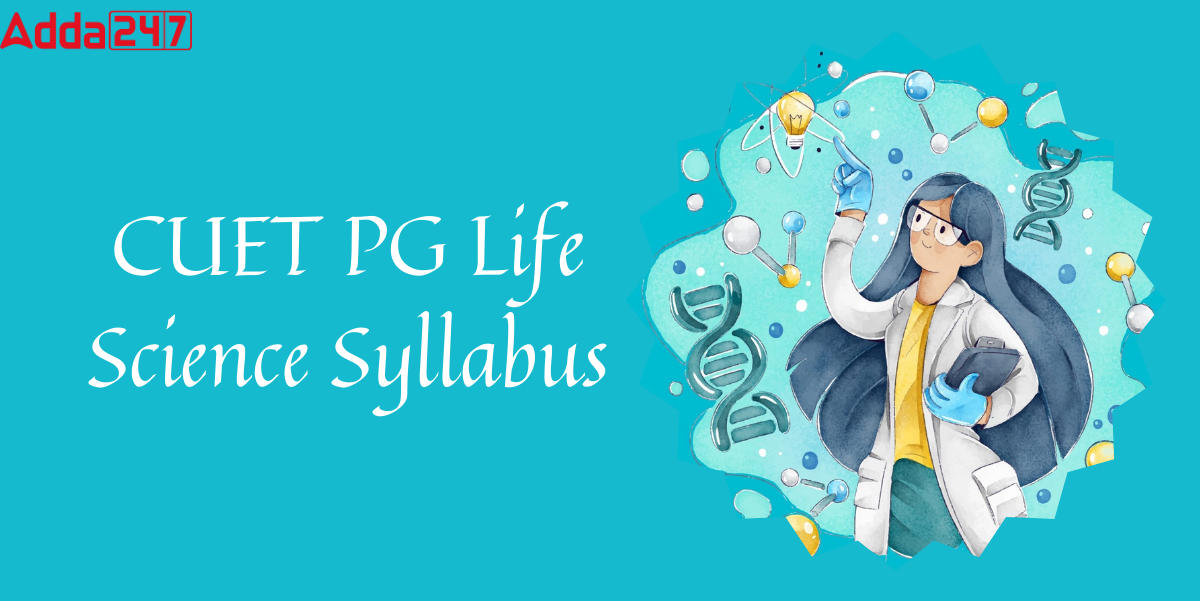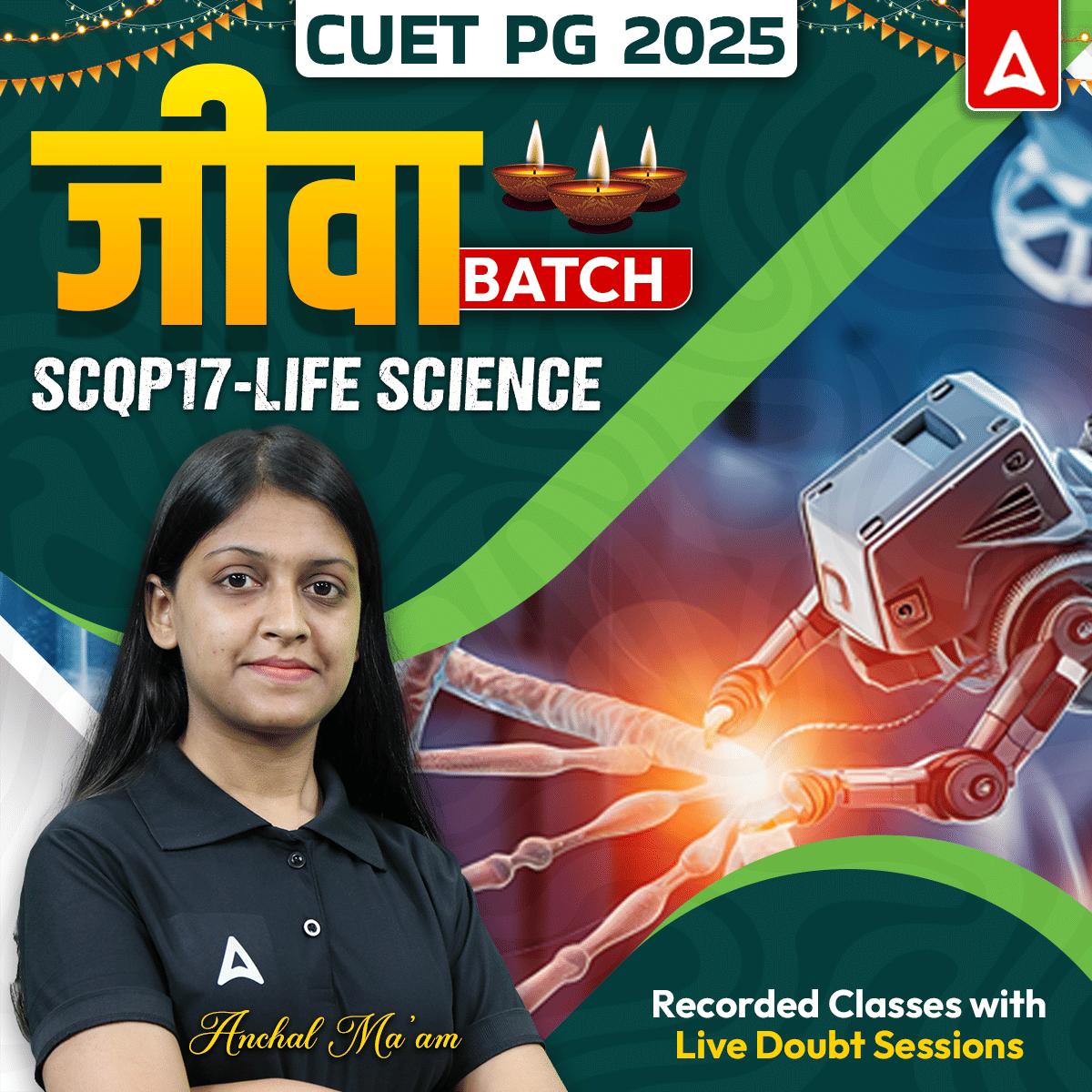Table of Contents
The National Testing Agency (NTA) has published the CUET PG Life Sciences Syllabus 2024 on its official website. The CUET PG Life Sciences Syllabus covers cell biology, molecular biology, genetics, evolution, ecology, biochemistry, botany, and zoology. Aspiring candidates who want to pursue a master’s program in any domain of Life Sciences may review the Unit-wise detailed Unit wise Life Sciences Syllabus for CUET PG 2025 in this post.
CUET PG Life Sciences Syllabus 2025
The National Testing Agency will conduct the Common University Entrance Test 2025 for Postgraduate programs in Life Science on March 27, 2025. Students aiming for higher studies in life sciences can prepare for their courses more efficiently if they grasp the subjects, subtopics, and specific abilities taught in the CUET PG Life Sciences Syllabus 2025. The CUET PG syllabus for Life Science is constantly updated to reflect the most recent developments in the field, equipping students for more advanced studies and research in the subject.
Life Sciences Syllabus for CUET PG 2025
Understanding the CUET PG Life Sciences Syllabus 2025 and exam pattern is the cornerstone for students to flourish in the CUET PG Score. As per the latest CUET PG Exam pattern, There are 75 questions in total for the CUET PG Life Sciences test.
All 75 questions based on the CUET PG Life Science Syllabus must be answered by candidates pursuing a master’s degree in life science. in the. Check out the key highlights of the CUET PG Life Sciences exam in the below table.
| CUET PG Life Science Syllabus Overview | |
|
Name of the Exam
|
Common University Entrance Test For Postgraduate programs (CUET PG)
|
|
Exam Conducting Body
|
National Testing Agency
|
|
Mode of the examination
|
Computer-based test (CBT)
|
|
Medium/ Language
|
English and Hindi
|
|
Duration of the examination
|
90 Minutes (1 hour 30 minutes) |
|
Frequency of exams in a year
|
Once a year |
|
Types of questions
|
Multiple Choice Questions (MCQs)
|
| CUET PG Life Science Subject code | SCQP17 |
|
Total number of Questions
|
75 |
| Sections | 1 |
|
Name of the sections
|
Domain-Specific Questions
|
| Total Marks | 300 |
|
Negative marking
|
Yes |
| Marking Scheme |
|
CUET PG Life Science Syllabus Units
CUET PG Life Science Syllabus consists of a total of 8 units. According to the CUET PG Life Sciences exam pattern, section B of the CUET PG Life Sciences exam will comprise 75 questions from the eight sections of the CUET PG Life Sciences syllabus. The following units are featured in the CUET PG Life Sciences syllabus:
| Sl. No | Name of Unit |
| I | Techniques |
| II |
Chromatin structure and function
|
| III | Biochemistry |
| IV | Biotechnology |
| V | Microbiology |
| VI | Molecular Genetics |
| VII | Plant Sciences |
| VIII | Animal Sciences |
Syllabus for CUET PG Life Sciences Unit-wise
Comprehending the CUET PG Life Sciences syllabus provides significant insights into the skills and information that are useful for students aspiring to careers in the life sciences. The CUET PG Life Sciences Syllabus covers chromatography, spectroscopy, microscopy, recombinant DNA technology, and gene cloning principles. These units will be divided into various subjects and subtopics in the future. The table below contains a unit-by-unit breakdown of the CUET PG Life Sciences Syllabus.
Unit 1: Techniques
Principles and applications of chromatography, spectroscopy, microscopy, electrophoresis, centrifugation, blotting, PCR & radioisotope techniques
Unit 2. Chromatin structure and function
Organization of chromosomes in prokaryotes and eukaryotes, chromatin types, centromere, Telomere and concept of gene.
Unit 3: Biochemistry
Structure and functions of proteins, DNA, carbohydrates, lipids & vitamins. Bioenergetics, Glycolysis, TCA cycle, Electron Transport System and ATP synthesis, oxidation and synthesis of fatty acid, membrane structure and function
Unit 4. Biotechnology
Recombinant DNA technology, principles of gene cloning, applications of biotechnology in medicine, industry and agriculture, animal & plant cell culture, environmental biotechnology
Unit 5. Microbiology
Diversity of microbes, bacterial reproduction, antimicrobial agents, significance of microbes in industry and agriculture, antigen, antibodies, complement systems, immunity, vaccines, plant viruses, animal viruses, and environmental microbiology.
Unit 6. Molecular Genetics
Principles of inheritance, linkage & crossing over, chromosomal
aberrations, extrachromosomal inheritance, replication, transcription, translation, DNA repair
and population genetics
Unit 7: Plant Sciences
Bryophytes, Pteridophytes, Gymnosperms, Angiosperms, Vascular system in plants, Economic important of plants, Photosynthesis, Photoperiodism, Vernalization, and Biogeochemical cycle
Unit 8: Animal Sciences
Characteristics of invertebrates and vertebrates, anatomy and physiology of different systems of humans, nerve impulse transmission, endocrinology, human diseases Apoptosis and cancer, inherited diseases, animal cell culture.
Join Today & Boost your Preparation with CUET PG 2025 SCQP17-जीवा BATCH
CUET PG Life Sciences Syllabus 2025 PDF
The Life Sciences Syllabus covers all of the major disciplines and subjects scheduled to be covered on the CUET PG 25 test. Candidates preparing for the CUET PG Life Sciences exam can download the CUET PG Life Sciences Syllabus 2025 PDF from the table below.
CUET PG Life Sciences Syllabus 2025 PDF Download
Best Books for CUET PG Life Sciences Syllabus
A good comprehension of the curriculum enables students to prepare for their courses more efficiently. We have included a list of outstanding books that outline the curriculum for a thorough understanding of the themes and subtopics. Candidates preparing for the CUET PG Life Sciences test should read the following books for the best preparation:
- Lehninger Principles of Biochemistry by David L. Nelson and Michael M. Cox
- Molecular Biology of the Cell by Bruce Alberts, Alexander Johnson, Julian Lewis, David Morgan,
- Martin Raff, Keith Roberts, and Peter WalterCUET PG for MSc Life Sciences by Diwakar Education Hub
- Biotechnology: Expanding Horizons by B.D. Singh
- Microbiology: An Introduction by Gerard J. Tortora, Berdell R. Funke, and Christine L. Case
- Life Sciences Fundamentals and Practise by Pranav Kumar
- Campbell Biology by Jane B. Reece, Lisa A. Urry, Michael L. Cain, Steven A. Wasserman, Peter V. Minorsky, and Robert B. Jackson
CUET PG 2025 Life Science Exam Preparation Tips
Grasping the complete CUET Life Sciences Syllabus is crucial for effective preparation for the CUET PG exam. The course addresses the fundamentals of chromatography, spectroscopy, microscopy, recombinant DNA techniques, and gene cloning. Learners need to be acquainted with this data prior to the test. Certain advice should be adhered to for CUET PG preparation. Suggestions for studying the CUET PG Life Sciences Syllabus 2025 consist of:
- Familiarize Yourself with the Curriculum: Learn about the complete CUET PG Life Science syllabus for 2025. Segment it into primary subjects and pinpoint critical areas that require greater focus.
- Develop a lesson plan: Formulate a comprehensive lesson plan that assigns time according to the challenge of each subject and your proficiency level. Include consistent modifications and training sessions in your schedule.
- Utilize credible textbooks: Select trustworthy and current textbooks, reference books, and online materials. Ensure that your educational resources conform to the 2025 curriculum to address all essential concepts.
- Concentrate on basics: Prioritize essential concepts in molecular biology, genetics, cell biology, biochemistry, and evolution. These regions are frequently examined.
- Utilization of Prior Papers: Consistently refer to CUET PG Life Science Past Year Question Papers and sample exams. This will assist you in grasping the exam format, various question types, and schedule.
- Conduct a practice exam: Arrange a practice test to assess your readiness. Evaluate your performance, pinpoint strengths and weaknesses, and modify your lesson plan as needed.
- Regularly review: Dedicate time to consistently revisit all topics. Enhance your grasp of essential ideas and fill in any areas of uncertainty.
- Keep informed: Frequently review official news and educational forums for updates or modifications in testing timelines or curriculum.
- Participate in Study Groups: Engage with peers in study groups or online discussions. Collaborating to address challenges and find solutions can result in fresh perspectives and enhance learning.




 CUET PG Cut Off 2025, Expected Course wi...
CUET PG Cut Off 2025, Expected Course wi...
 CUET PG Economics Previous Year Question...
CUET PG Economics Previous Year Question...
 CUET PG Political Science Previous Year ...
CUET PG Political Science Previous Year ...




